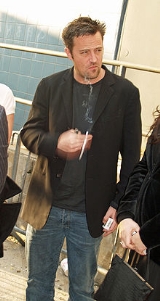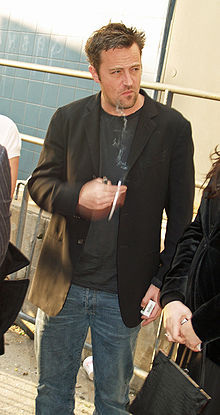
Candid photography
Encyclopedia

Photography
Photography is the art, science and practice of creating durable images by recording light or other electromagnetic radiation, either electronically by means of an image sensor or chemically by means of a light-sensitive material such as photographic film...
that focuses on spontaneity rather than technique, on the immersion of a camera within events rather than focusing on setting up a staged situation or on preparing a lengthy camera setup.
Description
Candid photography is best described as un-posed and unplanned, immediate and unobtrusive. This is in contrast to classic photography, which includes aspects such as carefully staged portrait photography, landscape photography or object photography. Candid photography catches moments of life from immersion in it.Candid photography is opposed to the stalking involved in animal photography, sports photography or photographic journalistic intrusion, which all have a focus on getting distant objects photographed, e.g. by using telephoto lens
Telephoto lens
In photography and cinematography, a telephoto lens is a specific type of a long-focus lens in which the physical length of the lens is shorter than the focal length. This is achieved by incorporating a special lens group known as a telephoto group that extends the light path to create a long-focus...
es. Candid photography's setup includes a photographer who is there with the "subjects" to be photographed, close, and not hidden. People photographed on candid shots either ignore or accept the close presence of the photographer's camera without posing.
The events documented are often private, they involve people in close relation to something they do, or they involve people's relation to each other. Candids are the kinds of pictures taken at children's birthday parties and on Christmas morning, opening the presents; the pictures a wedding photographer takes at the reception, of people dancing, eating, and socializing with other
As an art form
Some professional photographers develop candid photography into an art form. Henri Cartier-BressonHenri Cartier-Bresson
Henri Cartier-Bresson was a French photographer considered to be the father of modern photojournalism. He was an early adopter of 35 mm format, and the master of candid photography...
might be considered the master of the art of candid photography, capturing the "decisive moment" in everyday life over a span of several decades. Arthur Fellig, better known as Weegee, was one of the great photographers to document life in the streets of New York
New York
New York is a state in the Northeastern region of the United States. It is the nation's third most populous state. New York is bordered by New Jersey and Pennsylvania to the south, and by Connecticut, Massachusetts and Vermont to the east...
to often capture life — and death — at their rawest edges. Almost all successful photographers in the field of candid photography master the art of making people relax and feel at ease around the camera, they master the art of blending in at parties, of finding acceptance despite an obvious intrusive element - the camera. This is certainly true for most celebrity photographers, such as René Burri
René Burri
René Burri is a Swiss photographer known for his photos of major political, historical and cultural events and key figures of the second half of the 20th century. Burri worked for Magnum Photos and has been photographing political, military and artistic figures and scenes since 1946...
, Raeburn Flerlage or Murray Garrett.
It could be argued that candid photography is the purest form of photojournalism
Photojournalism
Photojournalism is a particular form of journalism that creates images in order to tell a news story. It is now usually understood to refer only to still images, but in some cases the term also refers to video used in broadcast journalism...
. There is a fine line between photojournalism and candid photography, a line that was blurred by photographers such as Bresson and Weegee
Weegee
Weegee was the pseudonym of Arthur Fellig , a photographer and photojournalist, known for his stark black and white street photography....
. Photojournalism often sets out to tell a story in images, whereas candid photography simply captures people living an event.
Camera equipment
Equipment for candid photography is typically lightweight, small and unobtrusive rather than big and intimidating. Lomo rule photographyLomography
Lomography is the commercial trademark of Lomographische AG, Austria for products and services catering to the Global Modern art community of Lomographic photography. The name is inspired by the former state-run optics manufacturer LOMO PLC of Saint Petersburg, Russia...
describes using an old Russian point-and shoot-camera for candid photography. The larger the equipment, the more difficult to master the art of making the equipment appear to be unobtrusive to achieve candid photography.
Candid photography typically requires high film speeds or ISOs as strobe flashes can interrupt interactions, causing people to stage their photo appearance rather than behaving naturally. For this reason, candid photography has traditionally taken place outdoors, where the sun provides ample light. Due to higher film speeds (ISO
Film speed
Film speed is the measure of a photographic film's sensitivity to light, determined by sensitometry and measured on various numerical scales, the most recent being the ISO system....
) being required for indoor ambient light photography, candid photography can feature grainy, high contrast images. However, several recent full-frame DSLR cameras have brought high-ISO noise to historically low levels, allowing for clean, saturated images at speeds up to and beyond ISO 6400.
As small point and shoot camera
Point and shoot camera
A point-and-shoot camera, also called a compact camera, is a still camera designed primarily for simple operation. Most use focus free lenses or autofocus for focusing, automatic systems for setting the exposure options, and have flash units built in....
s with affordable lenses are used widely for candid photography, photographs may feature vignetting, distortion and over saturation of colors. Due to short reaction times, exposure or focus may be slightly off. Due to strobe flashes being obstructive to candid photography and incompatible with many compacts, pictures may show blurring or other technical faults. All these are usually accepted as features of candid photography, and often, part of what makes candid photography an art.
Rangefinders and small, early film SLRs have long been preferred equipment for candid photographers. Candid photographers also seem to prefer the use of black and white film, which has an inherently artistic appearance and roughly 3 stops more dynamic range compared to digital cameras. However, as the dynamic range of digital cameras improves, smaller cameras are developed, and lens speed and sharpness improves, candid photographers are given many new tools to capture high quality candid images.
See also
- Celebrity photographyCelebrity photographyCelebrity photography is a subset of photojournalism. Its subject matter is celebrities in the arts, sports and sometimes politics. There are three types of celebrity photography used by magazines and newspapers. They are:...
- Documentary photographyDocumentary photographyDocumentary photography usually refers to a popular form of photography used to chronicle significant and historical events. It is typically covered in professional photojournalism, but it may also be an amateur, artistic, or academic pursuit...
- LomographyLomographyLomography is the commercial trademark of Lomographische AG, Austria for products and services catering to the Global Modern art community of Lomographic photography. The name is inspired by the former state-run optics manufacturer LOMO PLC of Saint Petersburg, Russia...
- PaparazziPaparazziPaparazzi is an Italian term used to refer to photojournalists who specialize in candid photography of celebrities, politicians, and other prominent people...
- PhotojournalismPhotojournalismPhotojournalism is a particular form of journalism that creates images in order to tell a news story. It is now usually understood to refer only to still images, but in some cases the term also refers to video used in broadcast journalism...
- Reportage
- Secret photographySecret photographySecret photography refers to the use of an image or video recording device to photograph or film a person who is unaware that they are being intentionally photographed or filmed...
- Street photographyStreet photographyStreet photography is a type of documentary photography that features subjects in candid situations within public places such as streets, parks, beaches, malls, political conventions and other settings....
- Snapshot (photography)Snapshot (photography)A snapshot is popularly defined as a photograph that is "shot" spontaneously and quickly, most often without artistic or journalistic intent. Snapshots are commonly considered to be technically "imperfect" or amateurish—out of focus or poorly framed or composed...
External links
- Photojournalism Ethics: Chapter 5, "The Right to Privacy"
- 11 Tips for Better Candid Photography by Darren Rowse. Digital Photography School.

